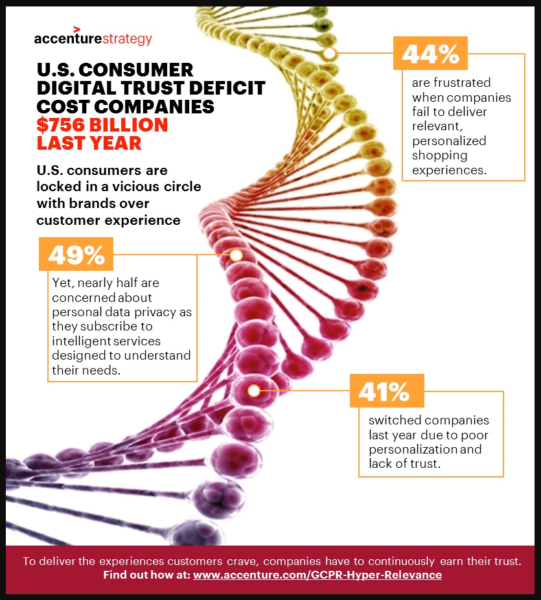Stop making the same mistakes: Preventing a ‘Groundhog Day’ scenario
Are your marketing campaigns tired and predictable? Contributor Mike Sands discusses ways to advance customer relationships to create better marketing and outcomes.
I start my day exactly the same way every day: I get up early, have a little breakfast and scan my daily newsfeed while listening to music. The headlines all seem to report on the latest retail fatality, the next big thing to take ad tech by storm or speculation on someone’s love life in Hollywood. The sameness of what I read makes me feel like Bill Murray in the movie “Groundhog Day” and reminds me how little marketing has evolved.
In the movie, Murray finally wakes up to a new life after realizing in order to stop reliving the past, he must stop repeating the same mistakes and find ways to improve. With this in mind, I hope to share some ideas that will inspire the same realization by pointing out three critical mistakes marketers can improve.
Because when it comes to building direct customer relationships, personalizing brand experiences and creating new engagements, most marketers are replaying ineffective, ultimately destructive strategies.
Mistake #1: Customer data is still out of control
For starters, consider how marketers are working with customer data, a brand’s single most important asset for understanding the unique characteristics of its users and informing ways to build profitable relationships.
Today, marketers have seemingly endless amounts of data, and marketing technology now offers over 5,000 solutions to help brands foster deeper, more intimate bonds with consumers. However, according to eMarketer, less than 9 percent of marketers in the United States use just one.
When a brand’s data is scattered among multiple disconnected platforms, channels and applications, customer connections are broken. Instead of fostering long-term relationships, these intermediary point solutions essentially leave marketers with a series of one-night stands.
Of course, brands have Facebook and Google, the duopoly the digital ad industry loves to hate but marketers hate to cut loose. Yet, while their massive scale and identity-driven capabilities are seductive, these walled gardens aren’t really any better at helping brands foster direct customer relationships. With limited visibility into what happens within these closed ecosystems, marketers are left with little to no insights to inspire the next step in a brand-customer relationship. This can lead to irrelevancy, distrust and eventually, churn.
Basically, the digital players who bring brands and consumers closer together are also pulling them farther apart. As technologies continue to advance, direct brand-customer relationships will be pivotal to success. This means brands can’t continue handing over data to intermediaries to broker customer relationships. Rather, they must devise better ways to work with marketing partners and directly with consumers to control this most precious enterprise asset. Data must be used freely, wisely and responsibly to maintain consistent and meaningful connections across channels and throughout the lifetime of each relationship.
Mistake #2: Personalization is still not actually personal
The relationship between a brand and a customer is a personal affair. But when it comes to creating personalized customer experiences, many brands are still not fully committed, and consumers can tell.
New research from Accenture reveals businesses in 2017 lost $2.5 trillion worldwide due to poor personalization and a lack of trust, with companies in the United States suffering $756 billion in lost retail and brand sales alone as over 40 percent of customers cut ties.
With nearly a decade of data technology solutions behind us, this is somewhat surprising. But the reality is that many marketers are still working with legacy systems within organizational silos without a clear personalization mission.
While technology and functional concerns may be out of a marketer’s scope, determining ways to honestly and openly collect customer data at each possible touch point should be a top priority. When done right, personalization not only adds value to customers’ lives, it adds value to the company.
Mistake #3: Technologies still lack the human touch
When it comes to creating personalized brand experiences, technology is going to be key. But before investing heavily in augmented reality, virtual reality and artificial intelligence, marketers must consider what technologies are actually relevant to their customers.
Technology is not just a mechanism for communicating with customers; it’s actually changed how consumers behave at each stage in their buying journey. Marketers need to adapt to meet customers on their terms and integrate technologies thoughtfully, with customer experience top of mind. If they don’t, brands risk losing the human touch and alienating their customers.
Research from Accenture reveals 83 percent of consumers in the United States “prefer dealing with human beings over digital channels to solve customer services issues,” and 77 percent feel the same when it comes to seeking advice.
I am not underplaying the importance of technology here, I am only trying to show the importance of remembering the fundamentals of marketing and using our heads, not just machines, to craft genuine and significant brand engagements.
Hey, we all make mistakes, and I realize the ones I’ve just listed may seem like insurmountable challenges. But by evolving our marketing mindsets, they can all be overcome. Similar to the way Murray’s “Groundhog Day” character transformed, marketers who pay attention to the behaviors and activities of customers — understanding what they need at the right moment, anticipating what they may desire next and using all of this knowledge to improve how we engage with them — will establish long-term relationships and a new era of opportunities.
And that’s every brand’s true Hollywood ending.
Opinions expressed in this article are those of the guest author and not necessarily MarTech. Staff authors are listed here.
Related stories


